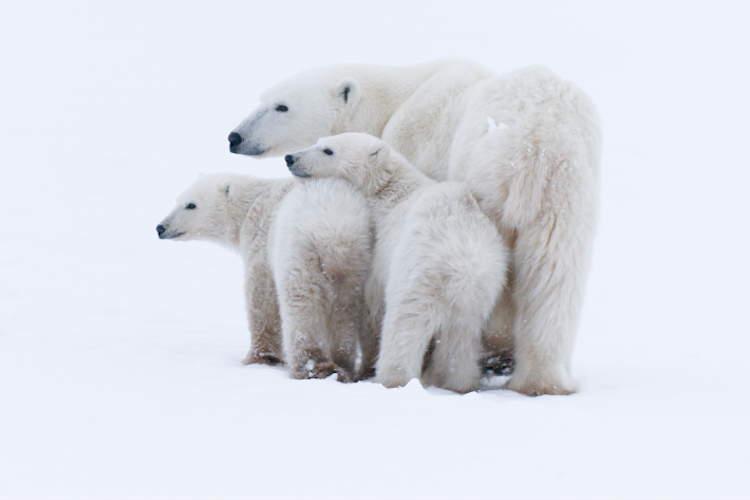Immerse yourself in their world
What makes the Beluga Boat so unique is our ability to share the whales with thousands of people around the world via live Beluga Cams in partnership with explore.org. Rigged with above-water and underwater cameras, complete with hydrophones, we have the ability to stream live footage of the whales in their natural habitat. Not only are viewers able to enjoy these incredible animals interacting with the boat and their surrounding environment, but they have the opportunity to take part in a citizen science project, Beluga Bits, by taking snapshots on the explore.org site.
When the Beluga Bits project started in 2016, a main goal was to find out if the same whales were returning to the estuary every year. It wasn’t long before the research team, led by Dr. Stephen Petersen at the Assiniboine Park Zoo, realized there was a lot more we could learn about the belugas through this method of data accumulation.
With the support of volunteers, student researchers, and new machine learning methods, researchers can now collect more robust information on mothers and calves, the social behavior and structure of the pods, wounds and their healing process, the overall health of the beluga population, and other aspects of the river’s ecology. One of the exciting findings from this project so far has been photo evidence of two new jellyfish species in the estuary—the melon comb jellyfish and common northern comb jellyfish (not previously documented within Hudson Bay).
The polar bears return
By the middle of beluga season in early August, my eyes no longer solely fix on the water and the whales. Each summer as the sea ice in Hudson Bay diminishes, eventually melting entirely, the polar bears who spent their winter on the ice hunting for seals now find themselves forced to shore, where they wait patiently until the fall when the bay freezes again. During this time, it becomes common to see the bears roaming the shorelines, sleeping among the rocks, or taking a swim in an attempt to cool off in the summer heat.
The time spent on shore between the ice break-up in summer and freeze-up in the fall is a fasting period for the bears. The ice-free period now lasts, on average, three to four weeks longer than it did in the 1980s. While fasting, the bears lose around one kilogram of body weight per day. It is safe to say the bears are hungry and have a lot of time to kill while they wait. These facts, combined with the natural curiosity of polar bears, often leads them to the town of Churchill where every once in a while, a bear will go unnoticed, slipping into the town limits.
This year, a few polar bears were sighted before the start of beluga season, but we have yet to see any from the Beluga Boat. Locals have also reported polar bear tracks in the sand on the shoreline near the edge of town. With the sea ice still lingering not far off the Churchill shoreline, I find myself frequently checking the Bear Tracker on Polar Bears International’s website to see how many bears are clinging to what's left of the ice, hoping to get one last meal before they’re forced to shore to begin another fasting period.
Ice maps show that Western Hudson Bay’s break-up this year should take place within about a week, roughly corresponding to the average break-up date of the 1980s, which is good news for these bears. In contrast, the Southern Hudson Bay polar bears faced a very early break-up this year, with strong winds in May pushing most of the ice to Western Hudson Bay. (See related article, An Unusual Summer in Hudson Bay).
Although I haven’t seen any polar bears yet this season, I witnessed ringed seals, the polar bears' favorite food, from the Beluga Boat for the first time. It is not often that we get the opportunity to navigate through the sea ice with the boat, and I was delighted when we began to spot the small seals surfacing near the stern, tentatively inching closer to get a better look at us. We even saw multiple seals hauled out on the ice, basking in the warm sunshine. It was a treat to start off the season and a reminder of why I love the summers in Churchill. Rarely are two days the same.
The brief summer and hundreds of hours spent on the Beluga Boat each year is something I will look forward to as long as I can call Churchill home. It’s safe to say beluga whales and polar bears are a part of my life now, and my only regret is this wasn’t the case sooner. The whales, the bears, the town, and the people make this a truly amazing place to live or to visit—and it's one we’re committed to preserving for future generations.
Kieran McIver is Polar Bears International's Churchill operations manager.

















